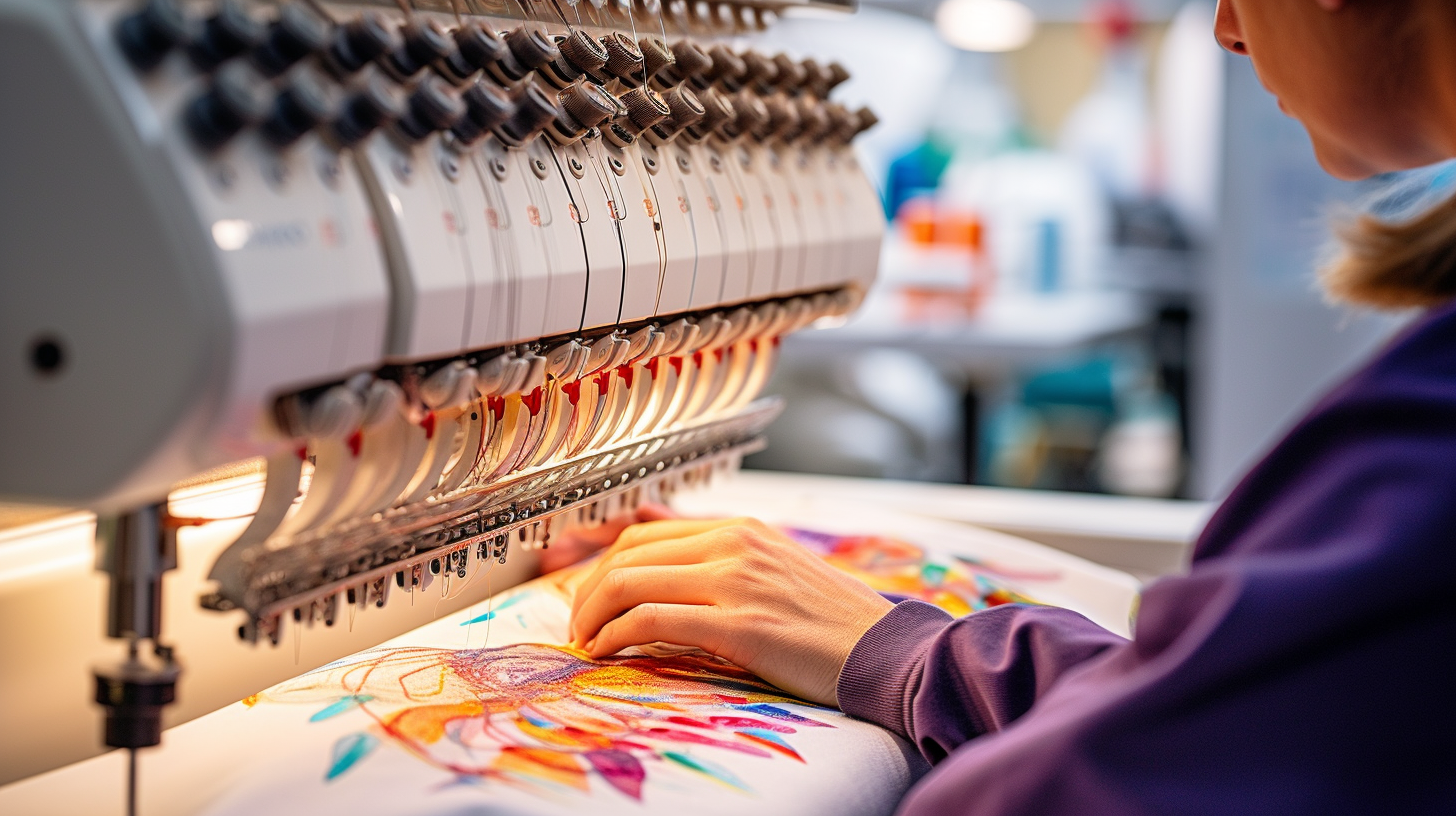Efficient Digitizing for Embroidery: Quick Turnaround
Efficient Digitizing for Embroidery: Quick Turnaround
Blog Article
Understanding the Needlework Digitizing Refine: Your Ultimate Guide
Embroidery digitizing is a precise craft that needs precision and experience to translate intricate designs into digital layouts for equipment needlework. As craftsmens begin on this journey to understand the embroidery digitizing process, a detailed understanding of the essentials sets the foundation for excellence.

Recognizing Embroidery Digitizing Basics
Embroidery digitizing basics create the structure upon which intricate designs are converted right into machine-readable formats for specific sewing. This preliminary action in the needlework digitizing process is essential for ensuring that the final embroidered item is a loyal depiction of the initial style. Comprehending embroidery digitizing basics involves grasping vital principles such as stitch types, sew instructions, thickness, rug, and pull compensation.
Stitch kinds play an essential duty in figuring out the aesthetic and textural result of the stitched style. By choosing the ideal stitch type, whether it be satin, fill, or running stitch, digitizers can attain the desired effect and enhance the total top quality of the embroidery. Additionally, sew instructions influences the circulation and measurement of the design, while density identifies the spacing and protection of the stitches.
Furthermore, padding sewing offers stability to the layout by securing the textile and stopping distortion during the embroidery process. Pull compensation is an additional necessary consideration to neutralize the natural propensity of material to contract when sewn. Mastering these needlework digitizing fundamentals is fundamental for producing professional-quality embroidered items.
Choosing the Right Digitizing Software Program
Selecting the suitable digitizing software program is an important decision that dramatically impacts the effectiveness and top quality of the embroidery digitizing procedure. Digitizing for Embroidery. When picking the ideal digitizing software application, it is necessary to think about factors such as the complexity of styles you plan to create, the user-friendliness of the software application, the level of consumer support used, and the compatibility with your needlework equipment
There are different digitizing software program options offered out there, varying from standard programs for newbies to innovative software program for specialist digitizers. Some preferred choices include Wilcom EmbroideryStudio, Hatch Needlework Software Application, and PulseID. These software use a vast array of devices and functions to assist you produce elaborate styles effortlessly.
Before making a choice, it is suggested to discover the various software application options through totally free trials or trials to establish which one finest fits your needs. Additionally, checking out reviews and seeking suggestions from knowledgeable digitizers can supply important understandings right into the toughness and weaknesses of each software (Digitizing for Embroidery). By carefully evaluating your needs and contrasting the features of different digitizing software program, you can make an enlightened choice that boosts your needlework digitizing operations
Digitizing Tools and Techniques

Optimizing Layout Setup for Needlework
Mastering the intricacies of design settings is fundamental in achieving optimal cause the needlework digitizing procedure, structure upon the structure laid by recognizing digitizing devices and strategies. When maximizing design setups for needlework, it is important to think about aspects such as stitch type, density, underlay, draw settlement, and enrollment. Stitch type selection influences the total look of the layout, with alternatives like satin, fill, and running stitches using different textures and results. Thickness refers to the spacing and density of stitches, influencing the style's coverage and resilience. Proper padding sewing provides security and stops fabric distortion, especially for complicated designs or on elastic materials. Pull settlement changes visit the site for fabric stretch throughout stitching, ensuring exact style replication. Enrollment settings straighten different components of the style accurately, preserving overall layout stability. By fine-tuning these layout setups, embroiderers can enhance the quality and accuracy of their stitched creations.

Troubleshooting Common Digitizing Issues
When coming across usual digitizing problems throughout the embroidery process, it is important to understand the origin and apply effective options promptly. One common issue is stitch thickness issues, where stitches might be also dense, triggering the material to tighten, or too sporadic, bring about gaps in the style. Readjusting the stitch density setups in the digitizing software can help solve this concern.
Another regular difficulty is string breaks throughout the needlework procedure. This web link can occur because of different factors such as wrong stress settings, dull needles, or utilizing low-quality string. Making certain proper maintenance of the embroidery device, consisting of regular needle modifications and stress changes, can decrease the event of string breaks.
Moreover, design registration mistakes can cause misaligned components within the needlework style. Checking the layout placement in the digitizing software application and making essential modifications prior to stitching can assist in avoiding this issue. By addressing these common digitizing issues promptly and successfully, you can make sure a smoother needlework process and high-grade ended up items.
Final Thought
In conclusion, mastering the needlework digitizing procedure needs a solid understanding of the basics, the appropriate selection of software application, and understanding of tools and methods. Enhancing design setups and fixing common digitizing issues are crucial actions in making sure premium embroidery outcomes. By complying with these steps diligently, one can attain accuracy and efficiency in the digitizing procedure.
Report this page